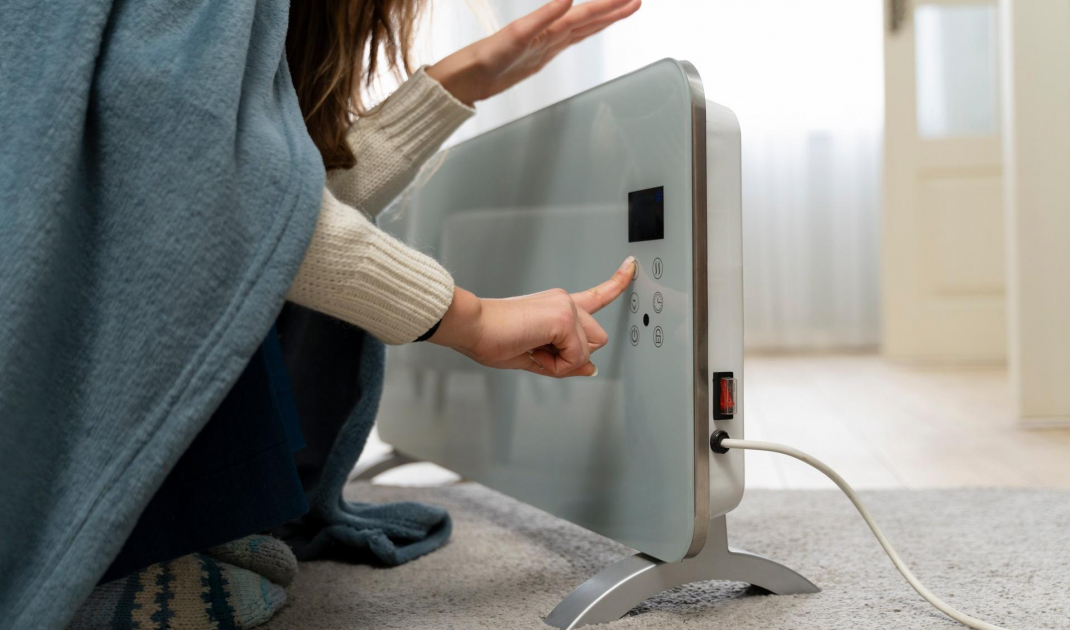Heating buildings with solid fuels raises many ecological concerns. At the same time, it is quite inconvenient for householders, and in some cases can be problematic to install. Infrared heating with heating films, on the other hand, is an almost maintenance-free system. Traditional radiators are replaced here by radiant heaters or heating mats.
Like the rays of the sun
The biggest source of infrared is the sun. The energy produced by it has a beneficial effect on well-being and metabolism. It reaches the earth's surface as variable length electromagnetic waves. On this basis, ultraviolet radiation, infrared radiation and visible light can be distinguished.
Infrared heating is the heating closest to natural heating. The heat coming from the sun is precisely infrared radiation. Engineers were inspired by this and created infrared radiant heating, so we can heat rooms in a more environmentally friendly and energy-efficient way.
Infrared heating system panel
© Freepik
How does infrared heating work?
Infraredheating can be used as a supplementary, but also as a primary source of heat in the home. Infrared waves make the heat spread evenly around the room, unlike traditional heating, which is convective, meaning it spreads with the movement of air. Infrared heating does not heat the air, only people and objects. Thus, it is an excellent solution for people who struggle with various types of allergies, as infrared does not set the air in motion and also does not dry it out.
Infrared heating can have three wavelengths:
IR-A - a short w avelength in the range of 0.8 to 2.5 micrometers (μm), which emits a clear light that could be harmful to the eyes in small rooms, so it is recommended in large spaces such as halls,
IR-B - medium wave in the range of 2.5 to 25 micrometers (μm), emitting negligible light, which is recommended for heating selected areas,
IR-C - long wavelength in the range from 25 to 100 micrometers (μm), emitting no light, which will be appropriate for heating rooms in the home or office.
Infraredheating systems are installed in the form of floor, ceiling or wall heating. They use either foils or heating panels. Each of these solutions gives a high effectivity.
Infrared heating, and the impact on health
Can infrared heating be dangerous to humans? It seems that it is not harmful to our health, and often even has a positive effect. Nor will it be dangerous to animals.
Infrared effectively eliminates the problem of fungus and mold growth. The waves are absorbed by the floor, ceiling and walls, making it even more difficult for microbial growth.
Infrared therapies are indicated as an adjunct to the treatment and rehabilitation processes of certain conditions. Infrared space heating is recommended for people at risk of injury and those rehabilitating for muscle problems. Infrared radiation improves blood and lymph circulation, promotes metabolism and supports the immune system. Scientific research indicates that infrared radiation has many beneficial effects on human bodies, including on the human psyche.
Not every wavelength is harmless, of course. So-called near-infrared can harm living organisms, but it is not used in heating systems.
Electric heating
© Freepik
Infrared heating and anions
Anions, thanks to their properties, remove dust, odors, bacteria and microorganisms from the air. Infrared heating largely emits anions. This is especially important in modern buildings, where computers, ventilation systems, fluorescent lights, other devices emit positively charged ions, as a result of which we can feel fatigue and irritability. Infrared heating fills rooms with molecules that are beneficial to health.
Disadvantages of infrared heating
Like many types of heating, it will do its job especially in buildings with good insulation. It should also be remembered that this system does not heat water, so another energy source must be used for this purpose. For some people it may also prove too expensive to operate, as it is an installation supported by electricity.


























